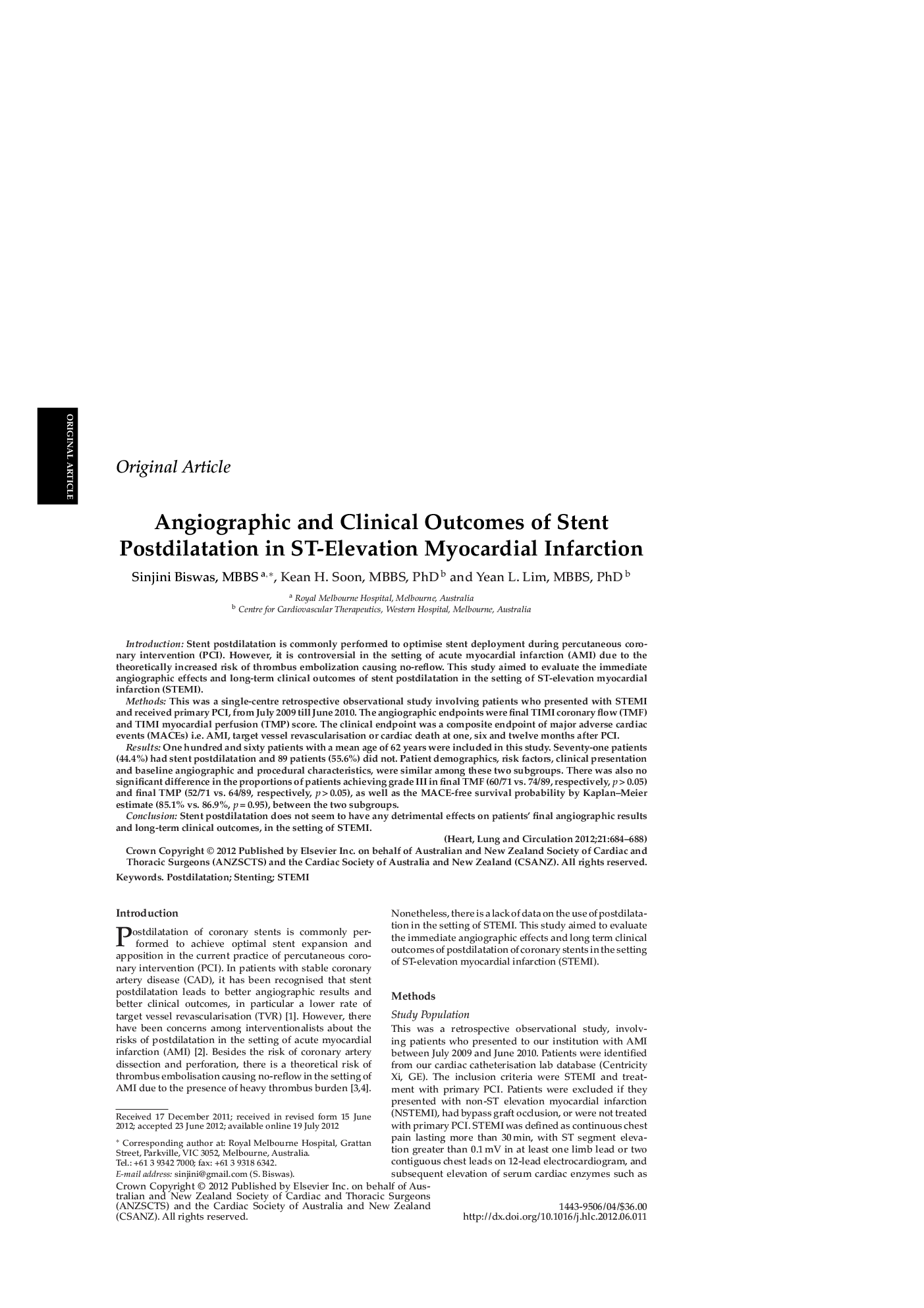| Article ID | Journal | Published Year | Pages | File Type |
|---|---|---|---|---|
| 2919222 | Heart, Lung and Circulation | 2012 | 5 Pages |
IntroductionStent postdilatation is commonly performed to optimise stent deployment during percutaneous coronary intervention (PCI). However, it is controversial in the setting of acute myocardial infarction (AMI) due to the theoretically increased risk of thrombus embolization causing no-reflow. This study aimed to evaluate the immediate angiographic effects and long-term clinical outcomes of stent postdilatation in the setting of ST-elevation myocardial infarction (STEMI).MethodsThis was a single-centre retrospective observational study involving patients who presented with STEMI and received primary PCI, from July 2009 till June 2010. The angiographic endpoints were final TIMI coronary flow (TMF) and TIMI myocardial perfusion (TMP) score. The clinical endpoint was a composite endpoint of major adverse cardiac events (MACEs) i.e. AMI, target vessel revascularisation or cardiac death at one, six and twelve months after PCI.ResultsOne hundred and sixty patients with a mean age of 62 years were included in this study. Seventy-one patients (44.4%) had stent postdilatation and 89 patients (55.6%) did not. Patient demographics, risk factors, clinical presentation and baseline angiographic and procedural characteristics, were similar among these two subgroups. There was also no significant difference in the proportions of patients achieving grade III in final TMF (60/71 vs. 74/89, respectively, p > 0.05) and final TMP (52/71 vs. 64/89, respectively, p > 0.05), as well as the MACE-free survival probability by Kaplan–Meier estimate (85.1% vs. 86.9%, p = 0.95), between the two subgroups.ConclusionStent postdilatation does not seem to have any detrimental effects on patients’ final angiographic results and long-term clinical outcomes, in the setting of STEMI.
